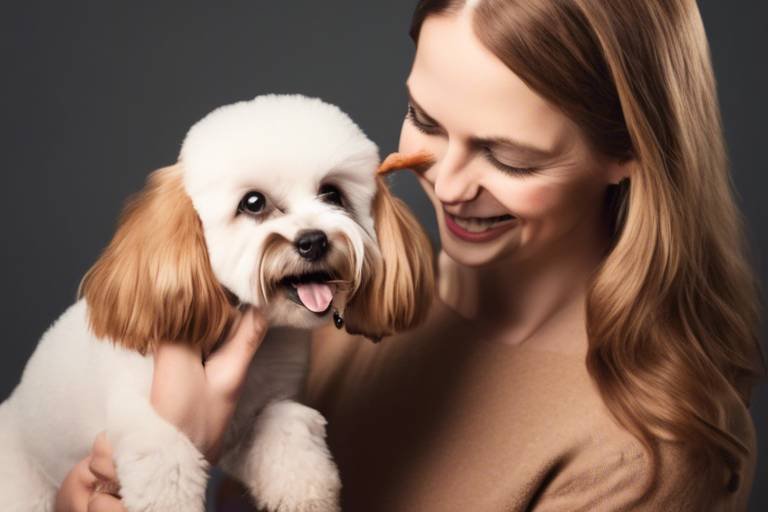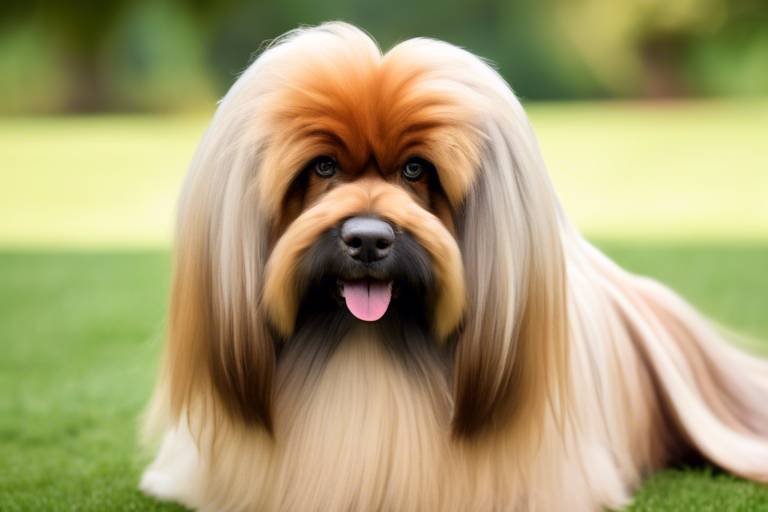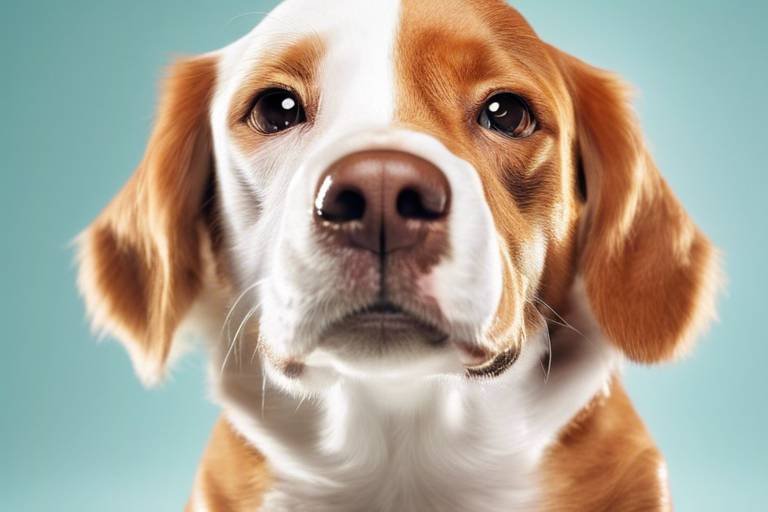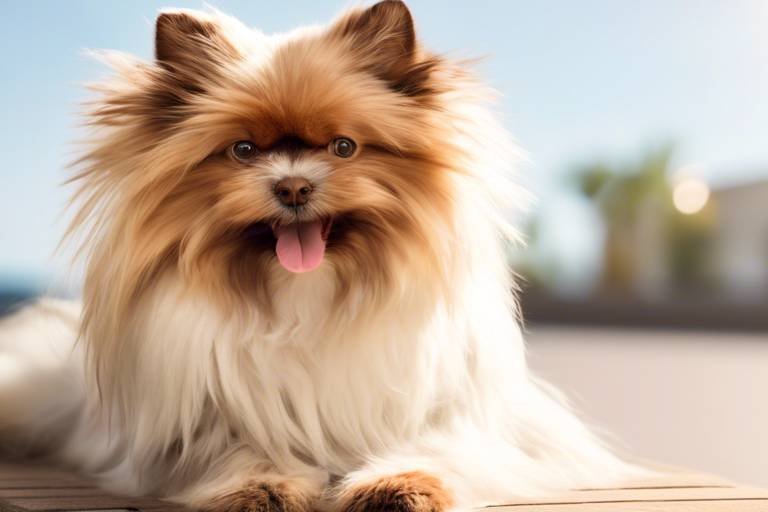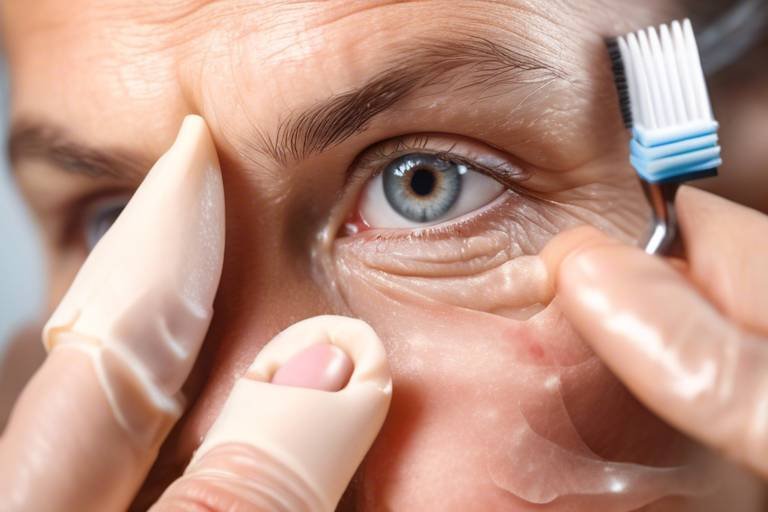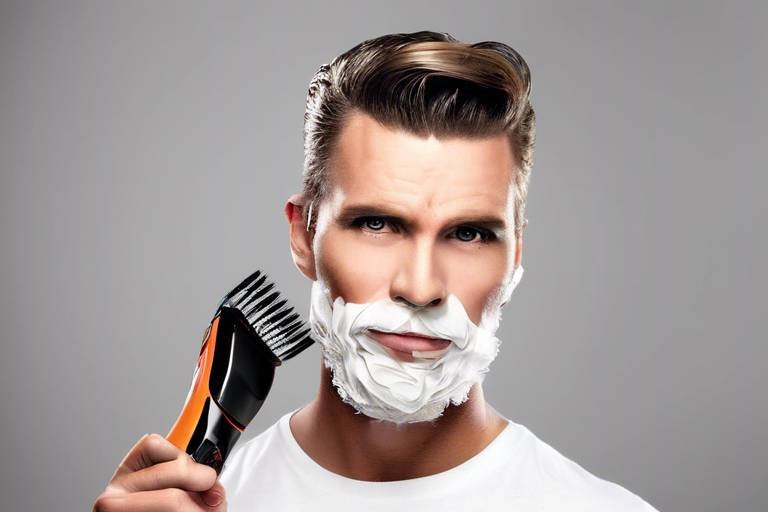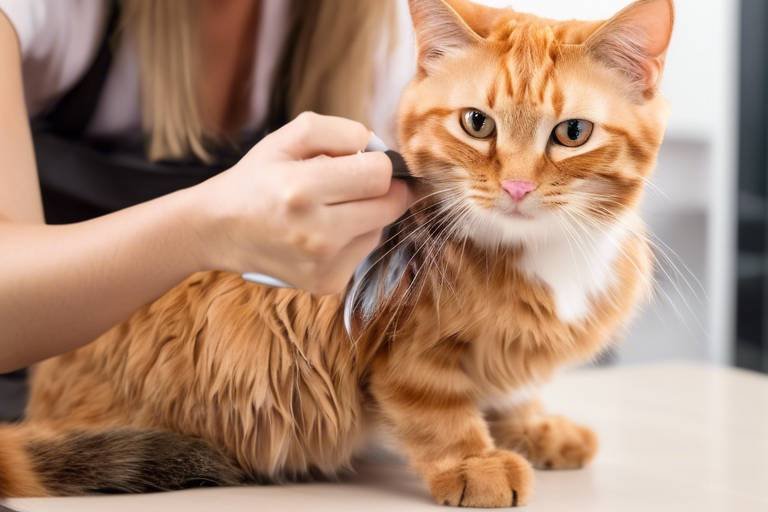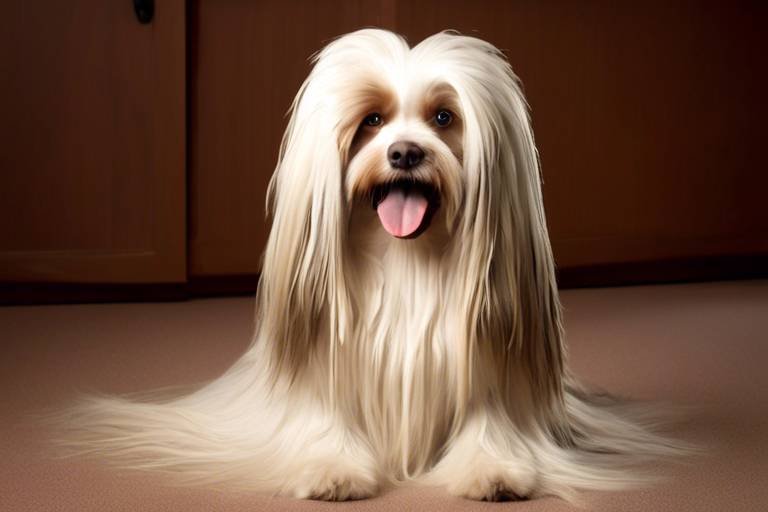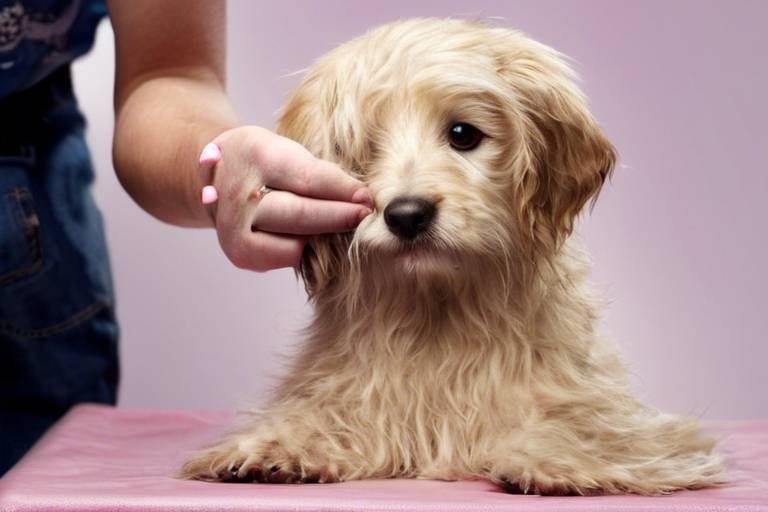The Best Grooming Techniques for Dogs with Thick Coats
When it comes to grooming dogs with thick fur, the process can feel like you're tackling a mountain of fluff! But fear not, because with the right techniques and tools, you can transform grooming from a chore into a bonding experience with your furry friend. Thick-coated dogs, such as Golden Retrievers, Siberian Huskies, and Bernese Mountain Dogs, have beautiful, dense fur that not only keeps them warm but also requires special care to stay healthy and mat-free. In this article, we'll delve into effective grooming techniques tailored specifically for these fluffy companions, ensuring their coats remain healthy, manageable, and free from mats and tangles. So, grab your grooming tools, and let’s get started on this fluffy adventure!
Thick-coated dogs are a joy to behold, with their luscious fur often making them the center of attention. However, their coats come with unique characteristics that require special attention. Thick fur provides excellent insulation against cold weather, but it can also trap dirt, debris, and moisture, leading to skin issues if not properly maintained. One of the biggest challenges of grooming thick coats is the potential for matting, which can cause discomfort and even pain for your dog. It's essential to understand these characteristics to provide the best care possible. By recognizing the benefits and challenges of thick fur, you can tailor your grooming routine to meet your dog's specific needs.
The right tools can make all the difference when grooming a thick-coated dog. Investing in high-quality grooming tools not only saves you time but also ensures your dog's coat remains healthy and shiny. Here are some essential tools you should consider:
- Brushes: Different types of brushes serve different purposes, and using the right one can help detangle and remove loose fur effectively.
- Combs: Combs are great for getting into those tricky spots and ensuring a smooth finish.
- Clippers: For dogs that require a trim, having a good pair of clippers can make the process much easier.
When it comes to brushing thick coats, not all brushes are created equal. Each type of brush serves a specific purpose, and knowing which one to use can greatly enhance your grooming routine. The two most popular types for thick-coated dogs are pin brushes and slicker brushes.
Pin brushes are ideal for thick coats, as they penetrate deep into the fur to help detangle and remove loose hair. The design features rounded tips that are gentle on your dog’s skin, making them perfect for regular grooming sessions. To use a pin brush effectively, start at the roots and work your way outwards, being careful not to tug too hard. Regular brushing with a pin brush can prevent mats from forming and keep your dog's coat looking its best.
Slicker brushes are essential for removing tangles and mats from thick fur. These brushes have fine, short wires close together, which can easily glide through the fur to remove loose hair and debris. When using a slicker brush, employ gentle strokes to avoid irritating your dog’s skin. This tool is particularly effective for areas prone to matting, such as behind the ears and under the armpits. Remember, a little patience goes a long way when grooming thick coats!
Combs and rakes can help with specific grooming tasks, especially for thick-coated dogs. Rakes are excellent for removing undercoat, while combs can help with finishing touches and ensuring that every strand of fur is in place. Incorporating these tools into your grooming routine can lead to a smoother, healthier coat.
Bathing thick-coated dogs requires special techniques to ensure thorough cleaning without damaging the coat. Using the right shampoo and drying methods are crucial in maintaining coat health. When bathing your dog, make sure to wet the fur thoroughly and apply a quality shampoo that suits their coat type. Rinse well to avoid any residue that can lead to skin irritation.
Selecting the right shampoo is vital for maintaining coat health. Look for shampoos specifically formulated for thick coats, as they often contain moisturizing ingredients that help maintain the coat's natural oils. Avoid shampoos with harsh chemicals, as these can strip the coat of its essential moisture.
Proper drying is essential to avoid matting. After a bath, you can choose to air dry your dog, but be mindful of the weather. If you opt for a blow dryer, use a low heat setting and keep it at a distance to prevent overheating the skin. Always ensure your dog is comfortable with the noise and sensation of the dryer.
Mats and tangles can be a common issue for thick-coated dogs, but with the right strategies, you can keep them at bay. Regular grooming is key to preventing mats from forming in the first place. If mats do occur, knowing how to remove them safely is essential for your dog's comfort.
Preventing mats is easier than removing them. Establishing a regular grooming routine, using the right tools, and keeping your dog's coat clean and dry are all effective strategies. Regular brushing, at least once a week, can significantly reduce the chances of mats forming.
If mats do form, knowing how to remove them is essential. Start by gently separating the mat with your fingers, and use a slicker brush or comb to work through it slowly. If the mat is particularly stubborn, consider using a mat splitter or scissors, but be extremely cautious to avoid injuring your dog's skin. Always reward your dog with treats and praise during the process to keep them calm and cooperative.
Q: How often should I groom my thick-coated dog?
A: It’s best to groom them at least once a week, but more frequent grooming may be necessary during shedding seasons.
Q: Can I use human shampoo on my dog?
A: No, human shampoos can be too harsh for dogs. Always use a shampoo formulated specifically for pets.
Q: What should I do if my dog hates being groomed?
A: Gradually acclimate your dog to grooming by introducing tools slowly and using treats to create a positive association.
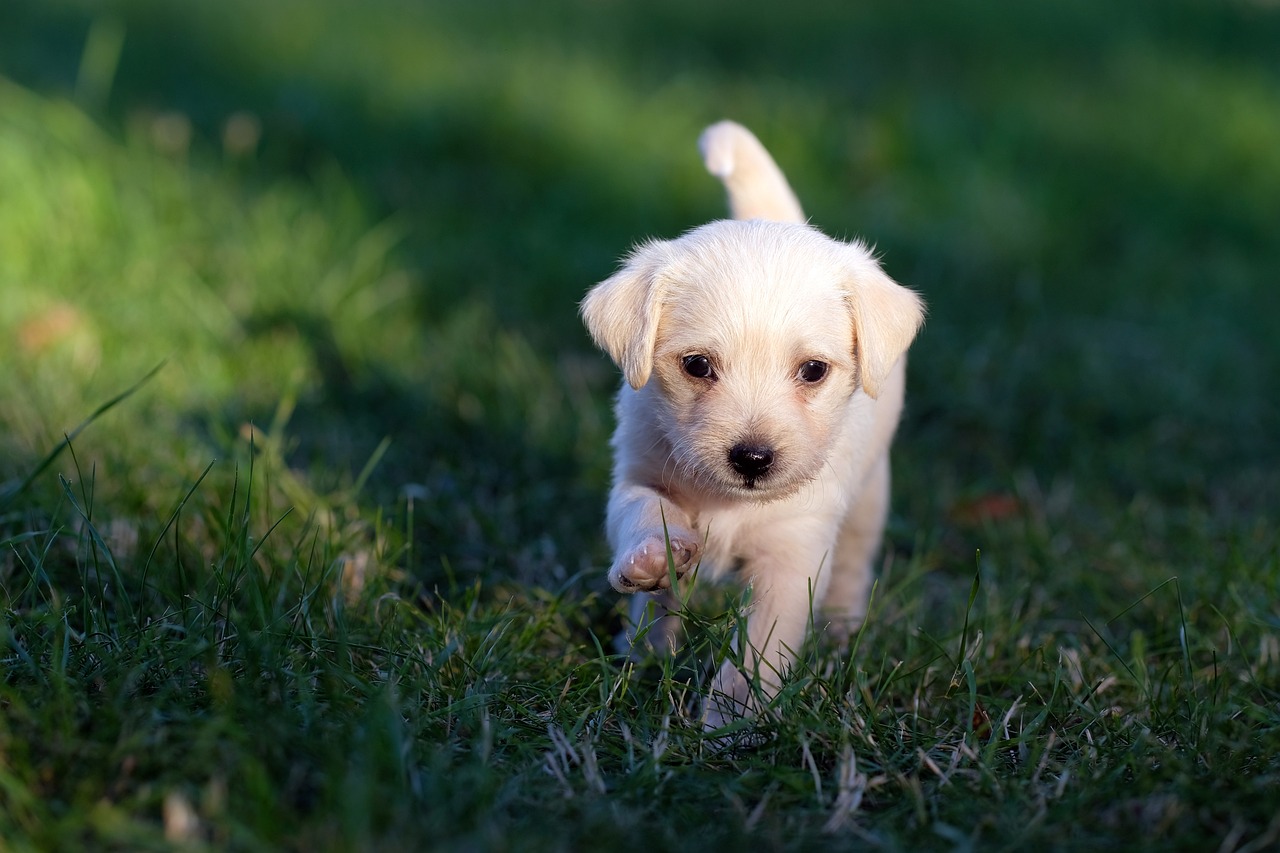
Understanding Thick Coats
When it comes to our furry friends, thick coats can be a double-edged sword. On one hand, they provide warmth and protection, making our dogs look fluffy and adorable. On the other hand, they come with a unique set of challenges when it comes to grooming. Thick-coated dogs, like Golden Retrievers, Bernese Mountain Dogs, and Samoyeds, have fur that is dense and often water-resistant, which can lead to a variety of grooming hurdles. Understanding these characteristics is the first step in mastering effective grooming techniques that ensure your dog's coat remains healthy and beautiful.
One of the most significant benefits of having a dog with a thick coat is their ability to regulate body temperature. This is especially true for breeds that originated in colder climates. Their fur acts as insulation, keeping them warm during winter months and cool in the summer. However, this same thick fur can trap dirt, debris, and moisture, leading to skin issues if not properly maintained. Moreover, the undercoat, which is softer and denser, can mat easily, creating a tangled mess that not only looks unkempt but can also cause discomfort for your pet.
Grooming a thick coat requires a bit of finesse and the right tools. You might be wondering, "What makes grooming a thick coat different from a short-haired one?" Well, the answer lies in the structure of the fur. Thick-coated dogs have two layers: the outer guard hairs and the softer undercoat. This unique structure means that regular brushing is essential to prevent mats and keep the coat healthy. If neglected, the undercoat can become matted, leading to painful tugging and pulling when you try to brush it out. This is why understanding the intricacies of a thick coat is crucial for any dog owner.
Moreover, thick coats can harbor allergens and parasites, making regular grooming not just a cosmetic task but a necessary part of your dog's health regimen. Grooming sessions help you keep an eye out for any skin irritations, ticks, or fleas that might be hiding in the dense fur. Think of grooming as a bonding experience; it's a chance to check in on your pet's health while keeping them looking their best.
To summarize, the unique characteristics of thick-coated dogs require dedicated grooming practices. Here’s a quick overview:
- Dense fur provides insulation but can trap dirt and moisture.
- Regular grooming is essential to prevent mats and tangles.
- Grooming helps identify skin issues and parasites early.
In the next section, we’ll dive into the essential grooming tools that will make managing your thick-coated dog's fur a breeze. So, grab your brushes, and let’s get started on this grooming adventure!
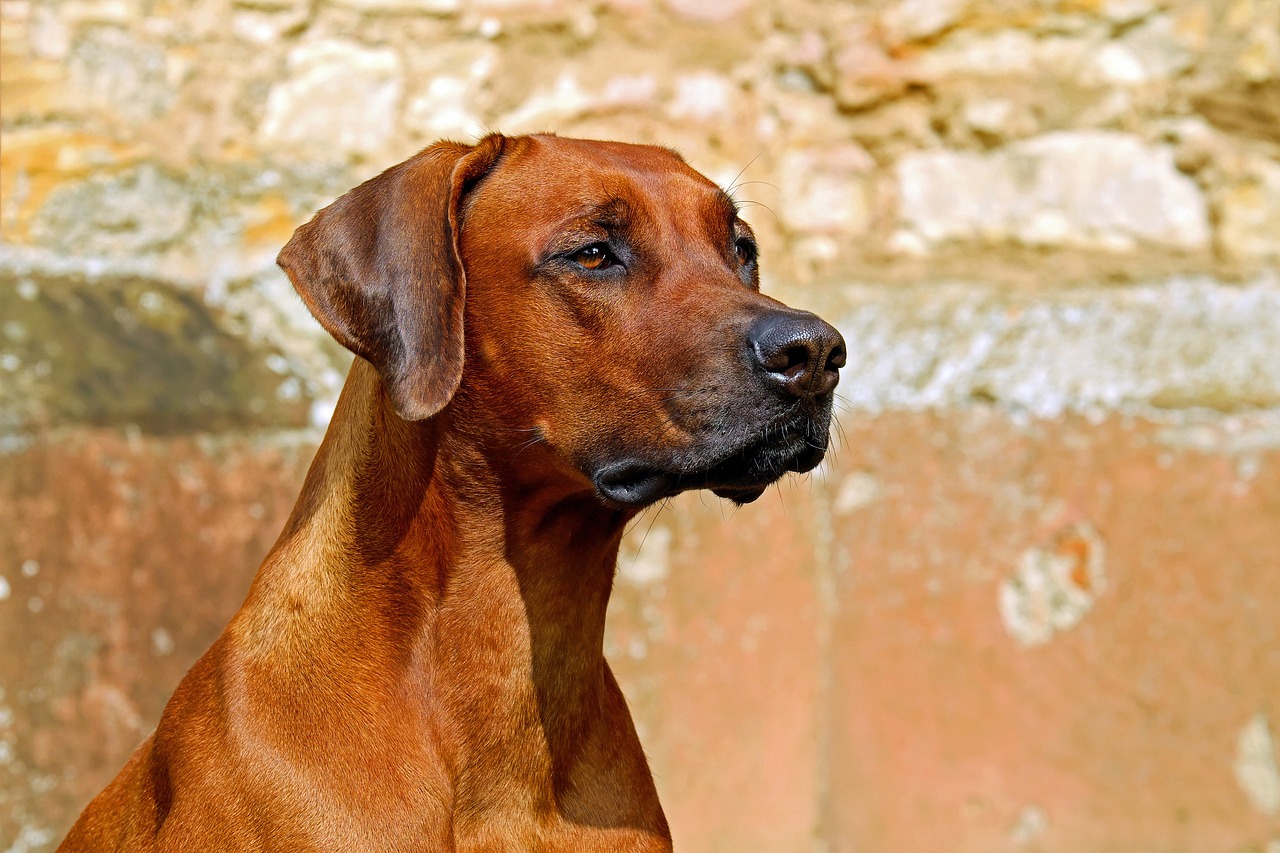
Essential Grooming Tools
When it comes to grooming dogs with thick coats, having the right tools can make all the difference. Just like a chef needs the right knives to prepare a delicious meal, a pet owner needs specific grooming tools to maintain their furry friend's coat. The right equipment not only makes the grooming process easier but also ensures that your dog's coat stays healthy and beautiful. So, what are the essential grooming tools for thick-coated dogs? Let's dive into the must-haves that every dog owner should consider.
First and foremost, you’ll need a good brush. Brushes are fundamental in managing thick coats, and different types serve various purposes. For instance, a pin brush is excellent for detangling and removing loose fur without pulling on your dog's skin. On the other hand, a slicker brush is perfect for tackling those stubborn mats and tangles. These brushes are designed with fine, bent wires that can penetrate deep into the coat, making it easier to smooth out any knots.
Besides brushes, combs and rakes are also essential tools in your grooming arsenal. Combs are great for finishing touches, allowing you to check for any missed tangles or mats after brushing. Rakes, particularly undercoat rakes, help to remove dead fur from the undercoat, which can significantly reduce shedding and keep your home cleaner. Using a combination of these tools will help you maintain a healthy coat and keep your dog looking its best.
To illustrate the importance of these tools, consider the following table that outlines the primary grooming tools, their functions, and the benefits they provide:
| Grooming Tool | Function | Benefits |
|---|---|---|
| Pin Brush | Detangling and removing loose fur | Gentle on the skin, prevents matting |
| Slicker Brush | Removing tangles and mats | Effective for thick fur, gives a smooth finish |
| Comb | Finishing touches and checking for missed tangles | Helps maintain a well-groomed appearance |
| Undercoat Rake | Removing dead fur from the undercoat | Reduces shedding and keeps the coat healthy |
Investing in these essential grooming tools will not only make the grooming process more efficient but also enhance the overall health of your dog's coat. Remember, grooming is not just about aesthetics; it’s about ensuring your furry friend is comfortable and happy. So, gear up with these tools, and you’ll be well on your way to mastering the art of grooming thick-coated dogs!
Brushes for Thick Coats
When it comes to grooming dogs with thick coats, the right brushes can make all the difference. Think of grooming as a dance between you and your furry friend; the right tools can help you both glide smoothly through the process. Thick coats can trap dirt, debris, and loose fur, making it essential to choose brushes that not only detangle but also promote a healthy, shiny coat. So, let’s dive into the world of brushes and discover which ones are the best companions for your thick-coated canine.
First up, we have pin brushes, which are like the Swiss Army knife of grooming tools. These brushes feature long, flexible pins that can penetrate deep into the coat, making them perfect for detangling and removing loose hair. When using a pin brush, it’s important to brush in the direction of hair growth to avoid discomfort. This technique not only helps in removing mats but also stimulates the skin, promoting a healthy shine. Remember to be gentle; think of it as giving your dog a relaxing massage rather than a chore!
Next on our list are slicker brushes. These brushes are specifically designed to tackle tangles and mats, acting like a superhero in your grooming toolkit. With their fine, short wires, slicker brushes can easily glide through thick fur, catching any knots along the way. To use a slicker brush effectively, start at the base of the coat and work your way up, using short strokes. This method helps to ensure that you’re not pulling on the skin, which can be uncomfortable for your pet. Plus, slicker brushes can help distribute natural oils throughout the coat, keeping it healthy and vibrant.
In addition to pin and slicker brushes, consider incorporating undercoat rakes into your grooming routine. These tools are fantastic for removing dead hair from the undercoat, which can be particularly dense in thick-coated breeds. An undercoat rake typically has long, curved teeth that can reach deep into the fur without damaging the outer coat. Using an undercoat rake regularly can help reduce shedding and prevent mats from forming, making it a valuable addition to your grooming arsenal.
To summarize, here’s a quick comparison of the brushes mentioned:
| Brush Type | Best For | Usage Tips |
|---|---|---|
| Pin Brush | Detangling and removing loose hair | Brush in the direction of hair growth |
| Slicker Brush | Removing tangles and mats | Use short strokes from base to tip |
| Undercoat Rake | Removing dead hair from the undercoat | Use with care to avoid pulling on the outer coat |
Choosing the right brushes for your thick-coated dog is not just about keeping them looking good; it’s about maintaining their overall health and happiness. Regular grooming with the appropriate tools can prevent discomfort caused by mats and tangles, making your furry friend feel more comfortable in their own skin. So, the next time you prepare for a grooming session, remember to select the right brushes and make it a fun bonding experience for both of you!
- How often should I groom my thick-coated dog? It's best to groom them at least once a week, but more frequent grooming may be necessary during shedding seasons.
- Can I use human brushes on my dog? It's not recommended, as human brushes may not be designed for the thickness and texture of dog fur.
- What should I do if my dog has mats? Use a slicker brush or undercoat rake, and if necessary, consult a professional groomer for severe mats.
Pin Brushes
When it comes to grooming dogs with thick coats, are your best friends. These brushes are specifically designed to tackle the challenges posed by dense fur, making them an essential tool in your grooming arsenal. The unique structure of pin brushes, which consist of long, flexible pins set in a cushioned base, allows them to glide through the fur without pulling or tugging at the skin. This is particularly important for thick-coated breeds, as their undercoats can often become matted if not handled carefully.
Using a pin brush is not only about aesthetics; it's about maintaining the health of your dog's coat. Regular brushing with a pin brush helps to remove loose hair and debris while distributing natural oils throughout the fur. This process not only keeps the coat shiny and healthy but also reduces the risk of skin irritations caused by trapped dirt and oils. Imagine your dog's coat as a beautiful tapestry; a pin brush is the tool that helps keep it vibrant and free from the wear and tear of daily life.
To effectively use a pin brush, start by ensuring your dog is calm and comfortable. You might want to do a little warm-up, like a gentle petting session, to help them relax. Then, section the coat into manageable parts. Begin brushing from the roots to the tips, using gentle strokes. If you encounter any knots or tangles, take your time and work through them slowly to avoid causing discomfort. Remember, patience is key! A good rule of thumb is to brush at least once a week, but for dogs with particularly thick or long coats, you might want to increase that frequency to two or three times a week.
Here’s a quick comparison table to help you understand the benefits of using a pin brush versus other types of brushes:
| Brush Type | Best For | Benefits |
|---|---|---|
| Pin Brush | Thick Coats | Detangles, distributes oils, prevents matting |
| Slicker Brush | Tangles | Removes tangles and loose fur |
| Bristle Brush | Short Coats | Gives shine, smooths fur |
In summary, incorporating a pin brush into your grooming routine is a game changer for dogs with thick coats. Not only does it help prevent matting and tangling, but it also promotes a healthier, shinier coat overall. So, the next time you think about grooming your furry friend, remember that a pin brush is more than just a tool; it's a pathway to a happier and healthier pup!
Q: How often should I use a pin brush on my dog?
A: It's recommended to brush your dog at least once a week, but for thick-coated breeds, two to three times a week is ideal.
Q: Can I use a pin brush on a wet coat?
A: It's best to use a pin brush on a dry coat to avoid pulling and causing discomfort. Wet fur can be more prone to breakage.
Q: What should I do if my dog has mats?
A: If your dog has mats, use the pin brush gently to work through them. If they are too tight, consider using a slicker brush first or consult a professional groomer.
Slicker Brushes
Slicker brushes are a **must-have** tool in the grooming arsenal for dogs with thick coats. These brushes are specifically designed to tackle the toughest tangles and mats, making them an essential part of your grooming routine. The unique design of a slicker brush features fine, bent wire bristles that effectively penetrate the dense fur, reaching the undercoat where mats often form. This is particularly important for breeds like Golden Retrievers, Siberian Huskies, and Newfoundlands, whose fur can easily become tangled without proper care.
Using a slicker brush is not just about removing tangles; it's also about maintaining a healthy coat. Regular brushing with a slicker brush helps to distribute natural oils throughout the fur, promoting a shiny and vibrant appearance. Additionally, it can help reduce shedding by capturing loose fur before it ends up all over your house. Imagine your dog’s coat as a beautiful tapestry; a slicker brush helps keep it intact and looking its best.
When using a slicker brush, it's essential to employ the right technique to avoid hurting your dog. Start by gently brushing in the direction of hair growth, using short, soft strokes. If you encounter a particularly stubborn mat, resist the urge to yank it out. Instead, use the slicker brush to work through the edges of the mat gently. You can also follow up with your fingers to help separate the hair without causing discomfort. Remember, grooming should be a pleasant experience for your dog, not a battle!
Here are some tips for using a slicker brush effectively:
- Brush Regularly: Aim to brush your dog at least once a week, or more frequently during shedding seasons.
- Be Gentle: Always be mindful of your dog's skin; applying too much pressure can cause irritation.
- Check for Skin Issues: While brushing, keep an eye out for any signs of skin problems, such as redness or lumps.
In summary, incorporating a slicker brush into your grooming routine can greatly enhance the health and appearance of your dog's thick coat. Not only does it help manage tangles and mats effectively, but it also promotes a shiny, healthy coat that you and your furry friend can be proud of. So, grab that slicker brush and make grooming a fun and rewarding experience for both of you!
Q: How often should I use a slicker brush on my dog?
A: It's best to brush your dog at least once a week, but more frequent brushing is recommended during shedding periods.
Q: Can I use a slicker brush on a puppy?
A: Yes, but be sure to use a gentle touch and introduce the brush slowly to help your puppy get used to the grooming process.
Q: What should I do if my dog has a lot of mats?
A: If your dog has significant mats, use the slicker brush to gently work through them. If the mats are too tight, consider consulting a professional groomer.
Combs and Rakes
When it comes to grooming dogs with thick coats, play an essential role in maintaining their fur's health and appearance. These tools are not just for aesthetics; they serve specific purposes that can greatly enhance your grooming routine. Combs are typically used to detangle and smooth out the fur, while rakes are excellent for removing loose hair and undercoat, which is crucial for preventing mats and keeping your dog's coat manageable. Think of combs and rakes as the dynamic duo of grooming; together, they tackle the challenges posed by thick fur.
Using the right type of comb or rake can make all the difference. For instance, a wide-toothed comb is perfect for gently working through any knots without pulling on your dog's skin. This is especially important for thick-coated breeds, where a little tugging can lead to discomfort or even pain. On the other hand, a rake is designed to penetrate deep into the coat, reaching the undercoat where loose fur often hides. This not only helps in shedding but also promotes airflow to the skin, which is vital for overall coat health.
Here are some key points to consider when incorporating combs and rakes into your grooming routine:
- Frequency of Use: Regular grooming with combs and rakes can help prevent mats from forming. Aim for at least once a week, or more often if your dog loves to play outside.
- Technique: Always start at the ends of the fur and work your way up to the roots. This method minimizes pulling and discomfort for your furry friend.
- Material Matters: Opt for stainless steel or high-quality plastic combs and rakes. They are durable and less likely to cause static, which can be a nuisance during grooming.
Incorporating combs and rakes into your grooming routine not only makes the process easier but also strengthens your bond with your dog. Think of it as a quality time spent together, similar to how you might enjoy a relaxing spa day. Your dog will appreciate the attention and care, and you'll enjoy the satisfaction of keeping their coat in top-notch condition.
Remember, grooming is not just about looks; it’s about ensuring your dog's comfort and health. So, the next time you embark on a grooming session, don’t overlook the importance of combs and rakes. They are your best allies in the quest for a healthy, beautiful coat!
Q: How often should I groom my thick-coated dog?
A: It’s recommended to groom your thick-coated dog at least once a week, but more frequent grooming may be necessary depending on their activity level and the season.
Q: Can I use human combs and brushes on my dog?
A: While some human grooming tools may work, it’s best to use tools specifically designed for dogs. These tools are tailored to handle the unique texture and thickness of dog fur.
Q: What should I do if my dog hates being groomed?
A: Patience is key! Start with short grooming sessions and gradually increase the time as your dog becomes more comfortable. Positive reinforcement, like treats and praise, can also help.
Q: How can I prevent mats from forming?
A: Regular grooming, using the right tools, and keeping your dog’s coat clean and dry can significantly reduce the chances of mats forming.
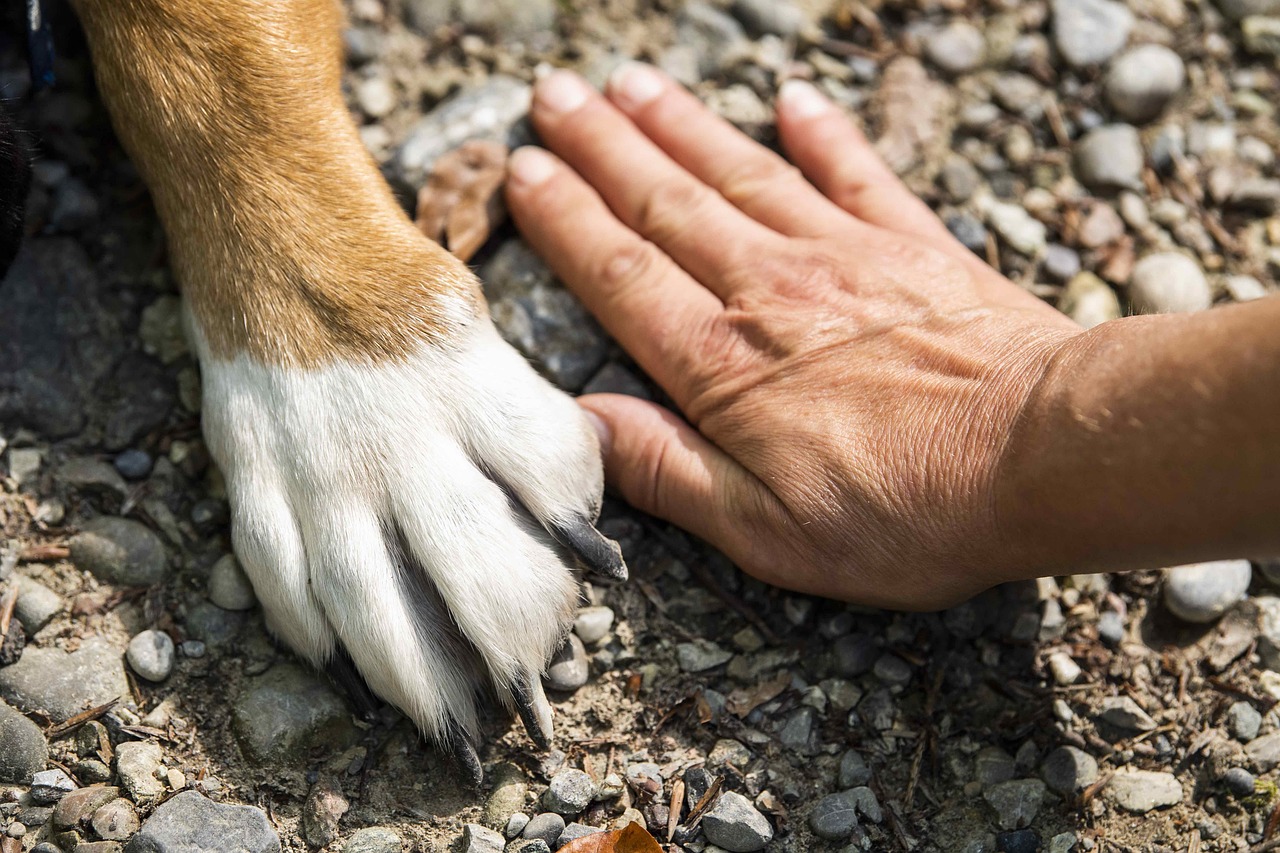
Bathing Techniques
Bathing thick-coated dogs is not just about getting them wet and lathering up some shampoo; it’s a delicate process that, if done correctly, can keep their fur looking fabulous and healthy. Thick fur can trap dirt, allergens, and oils, making it essential to establish a bathing routine that thoroughly cleans without causing damage. One of the first things to consider is the frequency of baths. Generally, thick-coated dogs should be bathed every 4 to 8 weeks, depending on their activity level and the environment they’re in. However, this can vary, so always keep an eye on your pup's coat condition.
When it comes to bathing, the temperature of the water is crucial. Dogs can be sensitive to extremes, so lukewarm water is ideal. It’s also important to have all your supplies ready before starting the bath. This includes a good quality dog shampoo specifically formulated for thick coats. Look for shampoos that are moisturizing and free from harsh chemicals, as these can strip the natural oils from their fur. A gentle, nourishing shampoo will help maintain coat health while ensuring a thorough clean.
To begin the bathing process, wet your dog’s coat thoroughly, starting from the neck and working your way down to the tail. Be cautious around their ears and eyes to prevent any irritation. Apply the shampoo and gently massage it into the coat, making sure to reach the skin beneath the thick fur. This step is vital, as dirt and debris can often hide close to the skin. Rinse thoroughly, as leftover shampoo can lead to skin irritation or an unclean coat.
After rinsing, consider using a conditioner designed for thick coats. This can help detangle fur and add an extra layer of moisture. Once you’ve applied the conditioner, let it sit for a few minutes before rinsing it out. This allows the product to penetrate the fur and provide maximum benefit. Remember, a well-conditioned coat is less likely to develop mats and tangles.
Drying your thick-coated dog properly is equally important. You might think that air drying is the easiest option, but it can lead to matting if the fur is left damp for too long. Instead, consider using a high-velocity dog dryer or a regular blow dryer on a low setting. Make sure to keep the dryer at a distance to avoid overheating your dog’s skin. As you dry your dog, use your fingers or a brush to gently separate the fur, helping to prevent any tangles from forming.
In summary, bathing a thick-coated dog is a multi-step process that requires attention to detail. From choosing the right shampoo to mastering the drying technique, each step plays a vital role in maintaining a healthy and beautiful coat. By following these guidelines, you’ll ensure that your furry friend not only looks their best but also feels comfortable and happy.
- How often should I bathe my thick-coated dog? It’s generally recommended to bathe them every 4 to 8 weeks, depending on their activity level and coat condition.
- What type of shampoo should I use? Look for moisturizing shampoos specifically formulated for thick coats, avoiding harsh chemicals.
- Is air drying safe for thick-coated dogs? While air drying is possible, it can lead to matting. It’s better to use a dog dryer or blow dryer on a low setting.
- Should I use conditioner? Yes! A conditioner can help detangle fur and keep it moisturized, which is essential for thick coats.
Choosing the Right Shampoo
When it comes to grooming your furry friend, selecting the right shampoo is like finding the perfect pair of shoes—it's all about comfort and suitability! Thick-coated dogs have unique needs, and using the wrong shampoo can lead to a dry, itchy coat or even irritation. So, how do you choose the best shampoo for your dog? First, consider the ingredients. Look for shampoos that are natural and free from harsh chemicals. Ingredients like oatmeal and aloe vera are fantastic for soothing the skin and providing moisture.
Next, think about your dog's specific coat type. For instance, if your dog has a double coat, you might want to opt for a shampoo designed to enhance the coat's natural oils. On the other hand, if your pup has a tendency to get dirty quickly, a deep-cleaning shampoo might be necessary. Here’s a quick rundown of some popular types of shampoos that work wonders for thick-coated dogs:
| Shampoo Type | Best For | Key Ingredients |
|---|---|---|
| Moisturizing Shampoo | Dry or flaky skin | Oatmeal, Aloe Vera |
| De-shedding Shampoo | Reducing loose fur | Omega fatty acids, Natural oils |
| Anti-tangle Shampoo | Preventing mats | Silicone, Conditioning agents |
Before making a purchase, it’s also wise to consult with your veterinarian, especially if your dog has sensitive skin or any underlying health issues. They can recommend specific products that cater to your dog's unique needs. Additionally, always perform a patch test when trying a new shampoo. Apply a small amount to a less noticeable area of your dog's skin and wait for 24 hours to ensure there’s no adverse reaction.
Lastly, remember that bathing your thick-coated dog shouldn’t be a rushed affair. Take your time to massage the shampoo into the coat thoroughly, ensuring you reach the skin beneath all that fluffy fur. Rinse well to avoid any residue that could lead to irritation. With the right shampoo and a bit of patience, you’ll keep your dog’s coat looking healthy, shiny, and absolutely fabulous!
- How often should I bathe my thick-coated dog? It’s generally recommended to bathe them every 4-6 weeks, but this can vary based on their activity level and coat condition.
- Can I use human shampoo on my dog? No, human shampoos can disrupt the pH balance of your dog's skin. Always use dog-specific shampoos.
- What should I do if my dog has a bad reaction to a shampoo? Rinse the shampoo off immediately and consult your veterinarian for further advice.
Drying Methods
Drying your thick-coated dog properly is crucial to maintaining the health and appearance of their fur. After a bath, you might think that simply letting your dog air dry is sufficient, but that can lead to matting and tangles if moisture gets trapped in the dense undercoat. So, what are the best methods to ensure your furry friend dries effectively without compromising their coat? Let's break it down!
One of the most popular methods is air drying, which is gentle and allows the coat to dry naturally. However, for thick-coated breeds, this method can take a long time and may not be effective in preventing mats. If you choose air drying, it's essential to brush your dog thoroughly before and during the drying process. This helps to separate the fur and allows air to circulate, reducing the risk of tangles.
Another effective method is using a blow dryer. However, not all blow dryers are created equal. It's important to use a dog-specific blow dryer or one with a low heat setting to avoid damaging your dog's skin. When blow drying, keep the dryer at a safe distance from the coat and constantly move it to avoid overheating any one area. Start by drying the undercoat, as this is where moisture tends to linger the most. You can also use a brush while blow drying to help separate the fur and achieve a smooth finish.
Here’s a quick comparison of the two drying methods:
| Method | Pros | Cons |
|---|---|---|
| Air Drying |
|
|
| Blow Drying |
|
|
Ultimately, the best drying method may depend on your dog's temperament and coat type. Some dogs may enjoy the sensation of a blow dryer, while others may prefer the calm of air drying. It's all about finding what works best for your furry friend. Always keep an eye on your dog's comfort level during the drying process, and adjust your technique accordingly.
In addition to these methods, consider using a microfiber towel to absorb excess water before you start drying. Microfiber towels are excellent for soaking up moisture without causing friction, which can lead to tangles. Gently pat your dog down, focusing on areas that tend to hold water, like the belly and underarms, before moving on to air or blow drying.
Remember, a well-dried coat not only looks great but also helps in keeping your dog comfortable and healthy. So next time your thick-coated pooch gets a bath, keep these drying methods in mind for a fabulous finish!
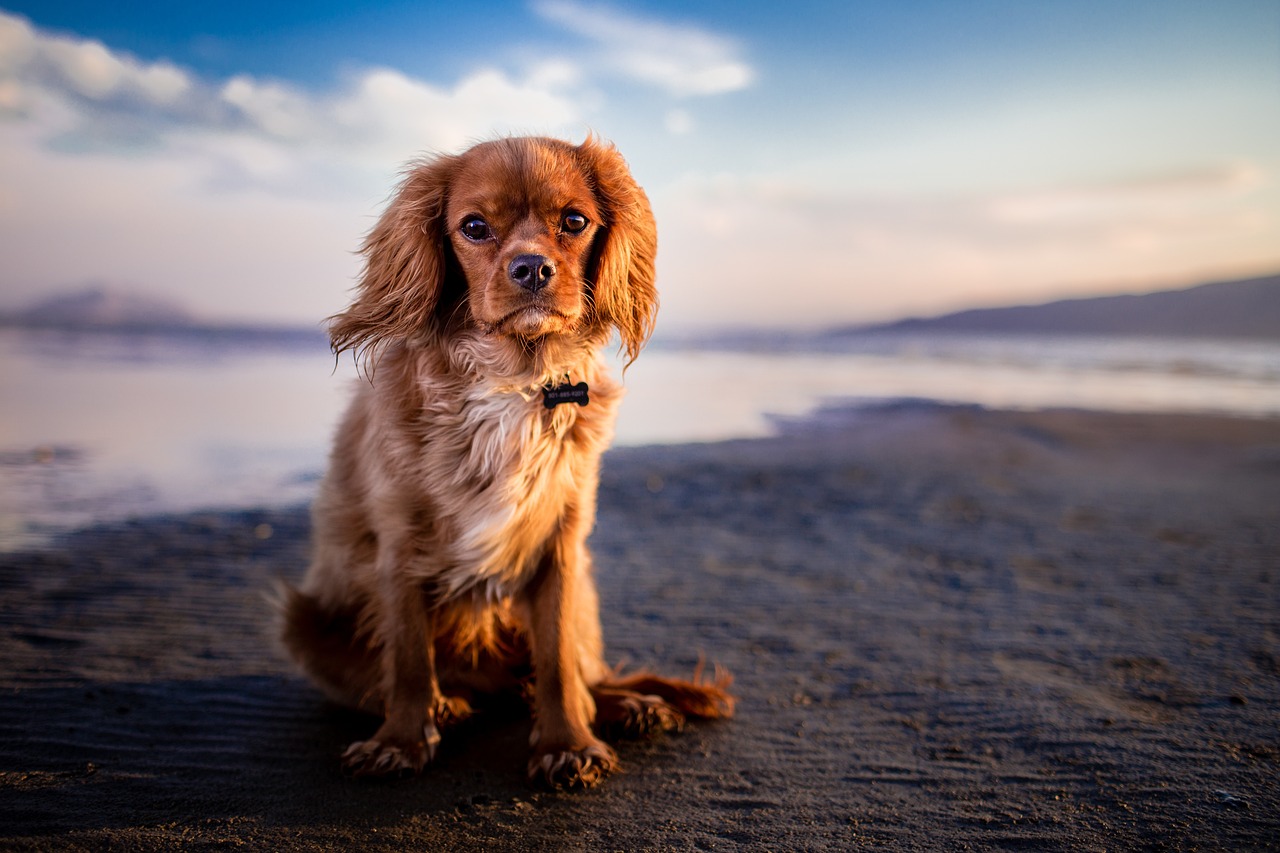
Dealing with Mats and Tangles
When it comes to grooming dogs with thick coats, one of the most challenging issues you might face is dealing with mats and tangles. These pesky knots can form quickly and easily, especially if your furry friend enjoys outdoor adventures or has a tendency to roll around in the grass. Understanding how to prevent and tackle these mats is essential for maintaining a healthy and beautiful coat. After all, no one wants to see their beloved pooch struggling with uncomfortable tangles!
Mats can often feel like a puzzle, with each twist and turn making it harder to unravel. They can form due to several reasons, such as shedding, moisture, or simply the natural movement of your dog. Thick fur, while stunning, can trap dirt and debris, leading to those dreaded knots. If left untreated, mats can pull on the skin, causing discomfort and even pain for your dog. Therefore, knowing how to deal with them effectively is crucial.
To keep your dog's coat in tip-top shape, it's important to establish a regular grooming routine. This not only helps in preventing mats but also allows you to check for any skin irritations or parasites that might be hiding beneath that beautiful fur. Here are some preventive measures you can incorporate into your grooming sessions:
- Regular Brushing: Aim to brush your dog's coat at least once a week. This helps to remove loose fur and prevents it from tangling with the rest of the coat.
- Use the Right Tools: As we discussed earlier, using pin brushes and slicker brushes can make a world of difference in managing thick fur.
- Bathing Frequency: Regular baths can help reduce the amount of dirt and debris trapped in the coat, making it less likely for mats to form.
- Check for Mats Frequently: Make it a habit to check your dog's coat for mats during your grooming routine. The sooner you catch them, the easier they are to remove!
Now, if you do find yourself facing a mat, don't panic. Here’s a step-by-step guide on how to safely remove them:
1. Gather Your Tools: Before you start, make sure you have a slicker brush, a comb, and possibly some detangling spray on hand. These will help make the process smoother.
2. Work in a Calm Environment: Choose a quiet space where your dog feels comfortable. A calm atmosphere can help reduce anxiety for both you and your pet.
3. Start with Your Fingers: Gently use your fingers to separate the mat from the rest of the coat. This can help loosen it without pulling on the skin.
4. Use the Slicker Brush: Once the mat is loosened, take your slicker brush and start brushing from the edges of the mat inward. This technique minimizes discomfort and helps break up the mat.
5. Finish with a Comb: After the mat is mostly gone, use a comb to ensure that there are no small tangles left behind. This will give your dog a smooth finish.
6. Reward Your Dog: After a grooming session, don't forget to give your dog a little treat or extra love. This positive reinforcement will make future grooming sessions easier!
In conclusion, dealing with mats and tangles in thick-coated dogs doesn't have to be a daunting task. With the right tools and techniques, you can keep your dog's coat healthy and beautiful. Remember, consistency is key. By incorporating regular grooming into your routine, you can prevent mats from forming in the first place, making your life—and your dog's—much easier.
1. How often should I groom my thick-coated dog?
It's best to groom your thick-coated dog at least once a week to prevent mats and tangles.
2. Can I use human shampoo on my dog?
No, human shampoos can be too harsh for dogs. Always choose a shampoo specifically formulated for pets.
3. What should I do if my dog has a severe mat?
If you encounter a severe mat, consider seeking help from a professional groomer to avoid hurting your dog.
4. Are there any specific breeds that are more prone to matting?
Yes, breeds like the Golden Retriever, Siberian Husky, and Poodle are known for their thick coats and can be more prone to matting.
5. How can I make my dog more comfortable during grooming?
Create a calm environment, use treats as rewards, and take breaks if your dog seems anxious.
Preventive Measures
When it comes to thick-coated dogs, prevention is truly the name of the game. Just like how we wear a raincoat to avoid getting soaked, your furry friend needs some proactive grooming to keep those pesky mats at bay. Regular grooming sessions are not just a luxury; they are a necessity! Aim for at least once a week, or even more often if your dog loves to roll around in the grass or play in the dirt. This routine helps to remove loose fur and debris before they have a chance to tangle up and create mats.
Another effective preventive measure is to establish a consistent grooming schedule. Dogs thrive on routine, and knowing when their grooming sessions will occur can make the experience smoother for both of you. Incorporate brushing into your daily playtime or bonding moments. Not only will this make grooming more enjoyable for your dog, but it will also help them associate it with positive experiences. Use treats or praise to reward your pup during and after grooming sessions to reinforce good behavior.
Additionally, be mindful of your dog's environment. If they spend a lot of time outdoors, try to keep an eye on the areas where they play. Certain terrains, like wooded areas or fields with tall grass, can harbor tangles and mats. If your dog is prone to getting dirty, consider a quick brush-down after outdoor adventures to prevent dirt and debris from settling into their coat. Remember, a little effort goes a long way in maintaining that beautiful, thick fur!
Lastly, consider investing in a high-quality grooming tool kit. While it may seem like an upfront expense, having the right tools can save you time and stress in the long run. Look for tools specifically designed for thick coats, as they can make the grooming process much more efficient and effective. A good pair of scissors can also come in handy for trimming away any small mats before they become larger issues.
In summary, maintaining a thick-coated dog’s fur is all about consistency, positive reinforcement, and the right tools. By incorporating these preventive measures into your grooming routine, you can ensure that your furry friend remains comfortable and mat-free.
- How often should I groom my thick-coated dog? It’s best to groom them at least once a week, or more frequently if they get dirty often.
- What tools do I need for grooming? Essential tools include pin brushes, slicker brushes, combs, and rakes designed for thick coats.
- Can I bathe my dog too often? Yes, excessive bathing can strip natural oils from their coat. Aim for a bath every 4-6 weeks.
- How can I tell if my dog has mats? Check for areas where the fur feels clumped together or where you can’t easily run your fingers through.
How to Remove Mats
Dealing with mats in your dog's thick coat can feel like a daunting task, but with the right approach, you can tackle them effectively and safely. First and foremost, it’s essential to stay calm and patient, as your dog may be uncomfortable during the process. Start by assessing the severity of the matting. If the mats are small and not too tight, you can often remove them at home. However, if they are large or close to the skin, it’s wise to consult a professional groomer to avoid injuring your furry friend.
To begin the detangling process, gather your grooming tools. You’ll need a slicker brush, a comb, and possibly some detangling spray to make the job easier. Here’s a step-by-step guide to help you:
- Prepare the Area: Make sure you have a comfortable space where your dog feels secure. This could be on a grooming table or simply on the floor with a blanket.
- Use Detangling Spray: Apply a small amount of detangling spray to the matted area. This will help loosen the fur and make it easier to work with.
- Start from the Outside: Begin by gently brushing the outer edges of the mat with a slicker brush. This will help to gradually break up the mat without pulling on the skin.
- Work Your Way In: Once the outer edges are detangled, slowly work your way into the center of the mat. Use your fingers to gently pull apart the fur, but be cautious not to tug too hard.
- Use a Comb: After you’ve loosened the mat, use a comb to further detangle the area. Start at the ends and work your way up to the roots.
- Check for Skin Irritation: Always keep an eye on your dog's skin as you groom. If you notice any redness or irritation, stop immediately and consult your vet.
- Reward Your Dog: Don’t forget to give your dog plenty of praise and perhaps a treat after each session. This will help them associate grooming with positive experiences.
If you encounter a particularly stubborn mat, you may need to use scissors as a last resort. However, be extremely cautious and only cut the matting, avoiding the skin at all costs. If you’re unsure, it’s always best to seek professional help. Regular grooming sessions can significantly reduce the occurrence of mats, so make sure to incorporate this into your dog's care routine.
In conclusion, while removing mats from thick coats can be challenging, it’s not impossible. With the right tools, techniques, and a little patience, you can keep your dog’s coat looking fabulous and healthy. Remember, the key is consistency; regular grooming not only prevents mats but also strengthens the bond between you and your furry companion.
- How often should I groom my thick-coated dog? It’s recommended to groom them at least once a week, but more frequent grooming may be necessary during shedding seasons.
- Can I use human shampoo on my dog? No, it’s best to use a shampoo specifically formulated for dogs to maintain their skin and coat health.
- What should I do if my dog doesn't like being groomed? Start slowly, use treats, and make the experience positive. If issues persist, consider professional grooming.
Frequently Asked Questions
- What are the best grooming tools for dogs with thick coats?
The best grooming tools for thick-coated dogs include pin brushes, slicker brushes, and rakes. Pin brushes help to detangle fur while slicker brushes remove mats and loose hair. Rakes are great for reaching the undercoat, ensuring a thorough grooming session.
- How often should I groom my thick-coated dog?
It's generally recommended to groom thick-coated dogs at least once a week, but some may require more frequent grooming, especially during shedding seasons. Regular grooming helps to prevent mats, keeps the coat healthy, and maintains a good bond between you and your furry friend.
- Can I use human shampoo on my dog?
No, you should avoid using human shampoo on dogs. Dog shampoos are specifically formulated to suit their skin pH levels. Using human shampoo can lead to skin irritation and dryness, which can be uncomfortable for your pet.
- What should I do if my dog has mats?
If your dog has mats, start by using a slicker brush to gently work through the tangles. For stubborn mats, you can use a dematting tool or scissors, but be very careful not to cut the skin. If the matting is severe, consider consulting a professional groomer.
- How can I prevent mats from forming in my dog's coat?
To prevent mats, regularly brush your dog's coat, especially in areas prone to tangling like behind the ears and under the legs. Bathing your dog with a good quality shampoo and ensuring they are completely dry before grooming also helps maintain a healthy, mat-free coat.
- What is the best way to dry my thick-coated dog after a bath?
The best way to dry a thick-coated dog is to first towel dry them to remove excess water, then use a blow dryer on a low setting. Ensure the dryer is at least a foot away from the coat to avoid overheating the skin. You can also let them air dry in a warm, draft-free area.
- How do I choose the right brush for my dog's coat type?
Choosing the right brush depends on your dog's specific coat type. For thick coats, a pin brush or slicker brush is generally best. Pin brushes are great for detangling, while slicker brushes excel at removing mats and loose hair. Always consider your dog's comfort and coat needs.


